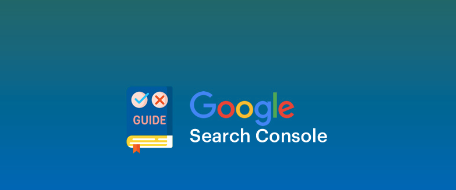Google Search Console, formerly known as Google Webmaster Tools, is a free tool offered by Google to help website owners monitor and optimize their website's performance in search results. In this article, we will provide a complete guide on how to use the Google Search Console to improve your website's search engine optimization (SEO).
Setting up Google Search Console
The first step to using the Google Search Console is to set up your account. Visit the Google Search Console page and log in using your Google account to accomplish this. Once you've signed in, click on the "Add Property" button and enter your website URL. You will then be prompted to verify that you own the website, which can be done using various methods, such as adding a meta tag or uploading an HTML file.
Submitting a sitemap
After verifying your website, the next step is to submit a sitemap. A sitemap is a file that contains a list of every page on your website and aids Google in comprehending the organization of your website. To submit a sitemap, go to the "Sitemaps" section of the Google Search Console and click on the "Add/Test Sitemap" button. Enter the URL of your sitemap, which should be in XML format, and click "Submit."
Monitoring search performance
One of the main features of the Google Search Console is the ability to monitor your website's search performance. To do this, go to the "Performance" section of the console, where you can see various metrics such as clicks, impressions, and click-through rate (CTR). You can also filter the data by date range, device, country, and more.
Identifying and fixing errors
Another important feature of the Google Search Console is the ability to identify and fix errors on your website. In the "Coverage" section of the console, you can see any errors or warnings that Google has detected on your site, such as crawl errors, indexing issues, or security issues. You can then take steps to fix these errors and improve your site's performance.
Checking for manual actions
Google may take manual action against your website if it violates Google's webmaster guidelines. Manual actions can result in a penalty or even a complete removal of your site from Google's search results. To check for manual actions, go to the "Security & Manual Actions" section of the console, where you can see if your site has been affected by a manual action and the reason for the action.
Analyzing backlinks
Backlinks, or links from other websites to your site, are an important factor in SEO. The Google Search Console allows you to analyze your backlinks and see which sites are linking to your site. In the "Links" section of the console, you can see a list of the top linking sites and pages, as well as the anchor text used in the links.
Testing and improving website speed
Website speed is another important factor in SEO, as it can affect user experience and search engine rankings. The Google Search Console offers a "Core Web Vitals" report that measures your site's speed and other user experience metrics. You can use this report to identify any issues and take steps to improve your site's speed and user experience.
Enhancing search appearance
Finally, the Google Search Console offers several features to enhance your site's search appearance. For example, you can use the "Enhancements" section to add structured data to your site, which can help Google understand the content on your site and display rich snippets in search results. You can also use the "URL Inspection" tool to see how Google crawls and indexes individual pages on your site.




Leave Comment